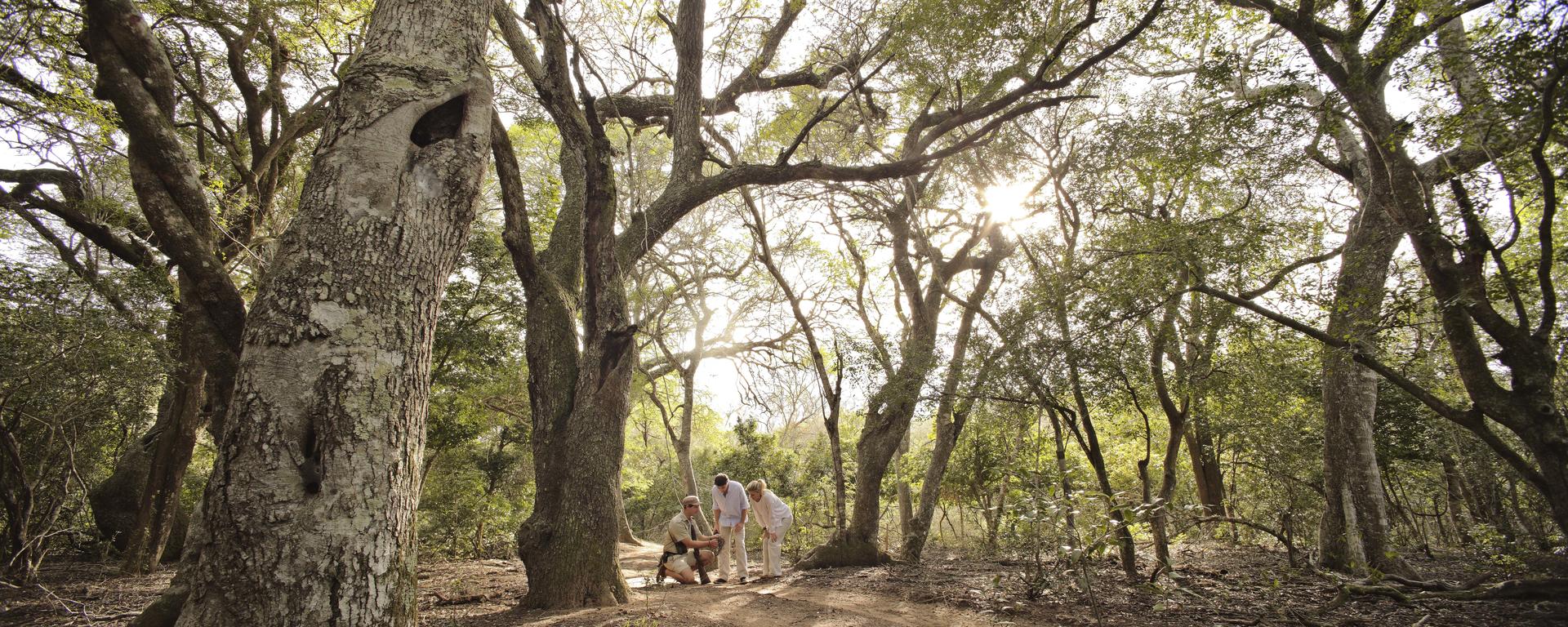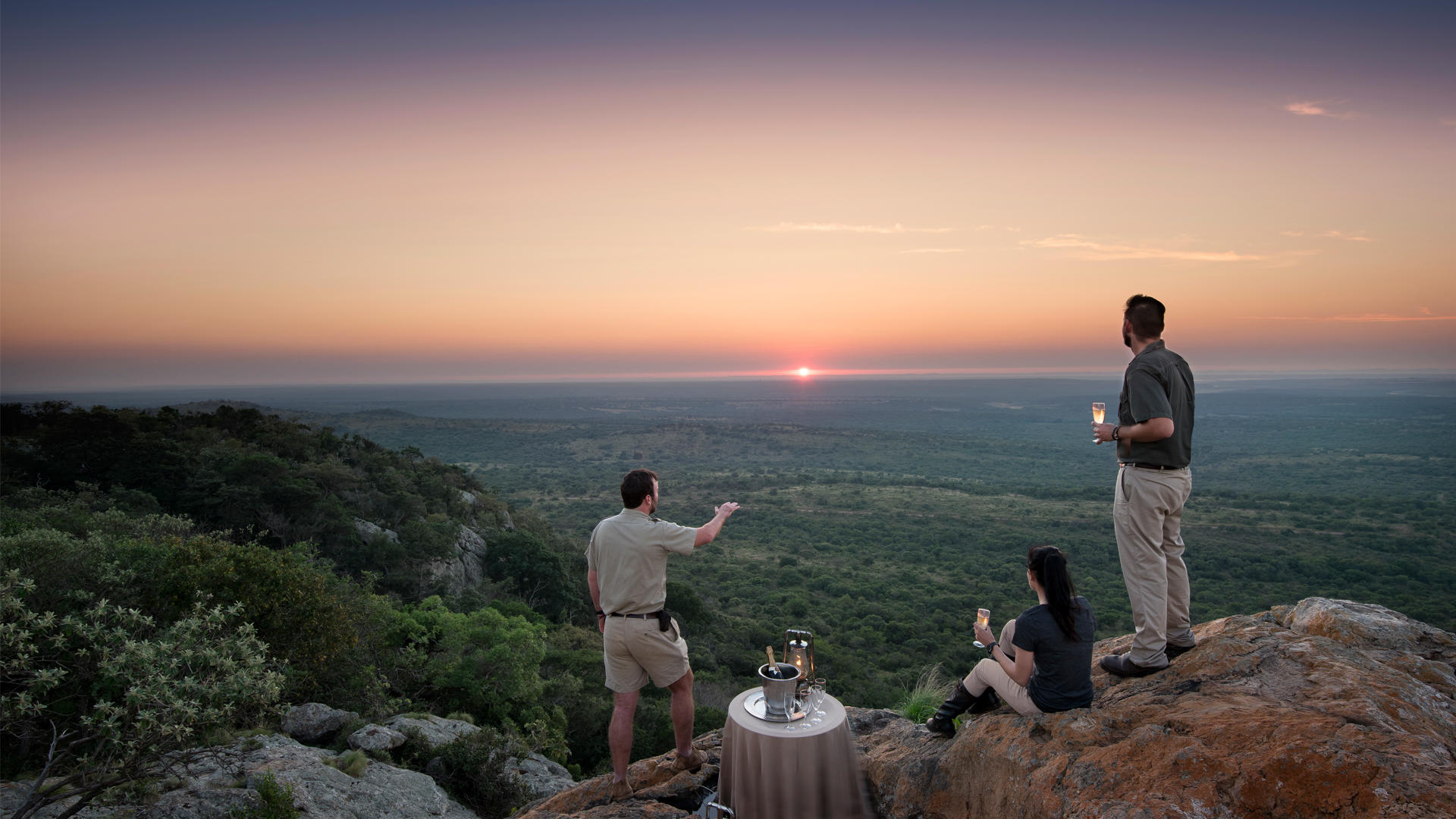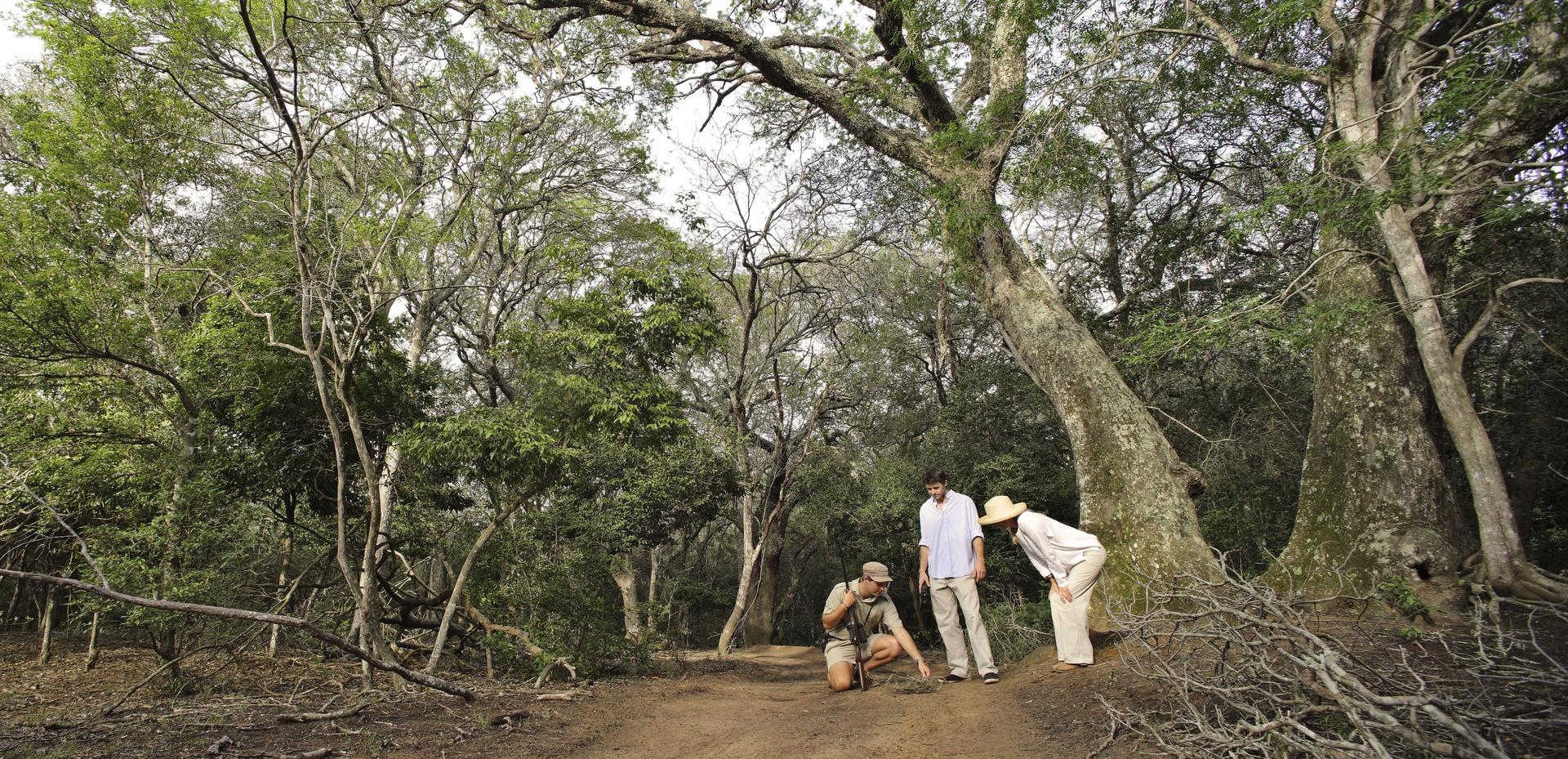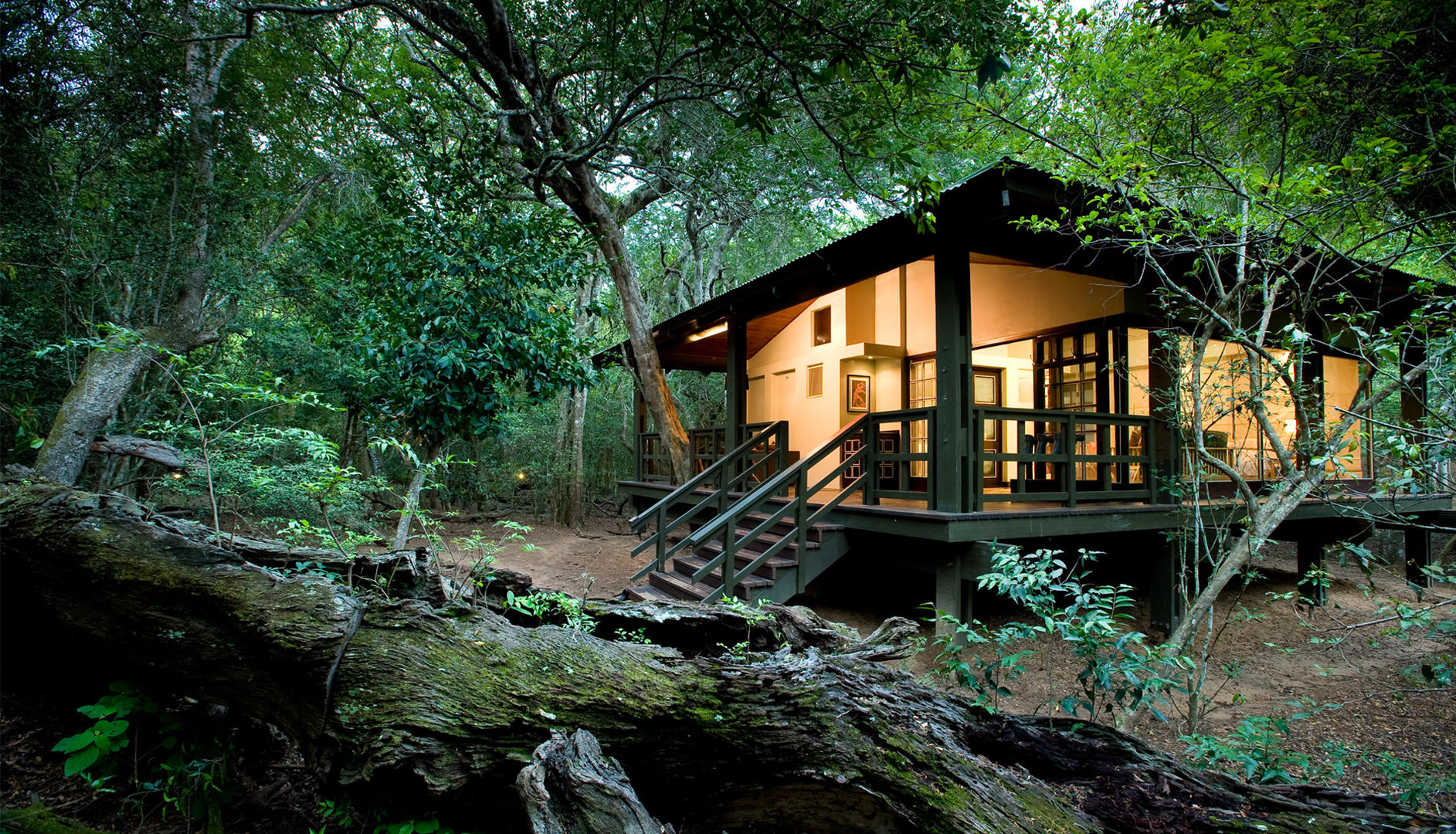When describing the Sand Forest, one might find themselves describing a fantasy world found only in story books and written by an author with a wild imagination. A forest that has more secrets than we can discover and more questions than answers. A forest so old that when you walk among the ancient trees you walk backwards in time and find yourself in a living world from millennia ago.
This extremely rare stretch of vegetation can be found tucked away in between the Indian ocean and the Lembombo mountains that run parallel with the coast in. This corridor can be found on the East coast of South Africa in the hot and humid Maputaland, KwaZulu natal. There is only about 6000ha of Sand Forest left in the world and the forest that I’ll be referring to today is found in the northern sections of Phinda Private Game Reserve where you can find 1000ha of protected forest. It’s where this stretch of forest is found that makes the sand forest so special in its creation and design. I would love to share with you my passion for this unique, mysterious, and intriguing hidden gem. To do this I would like to share my understanding on how the forest began as this, for me, puts it all into perspective.
If you were to stand on the Lembombo mountains looking toward the Indian ocean you will notice the topography of the land almost looks like “ripples” heading to the coast as gentle hills slowly rise and fall finally reaching the towering, vegetated sand dunes on the beaches. These “ripples” are in fact ancient sand dunes, and each is a snapshot back in time showing us where the coast once began before receding to the next dune pausing long enough to create a new coastline for a brief period before receding again. The soils left behind and mixed with the volcanic ash being blown around during continental breaking and shifting created a unique soil type in the corridor. If you took off from where you stood on the mountain and flew toward the coast you would see distinct, circular vegetation types, running exactly along the ridge of the old sand dunes. These circular patches are noticeable by the giants of the sand forest that lift their heads above the canopy in a struggle for sunlight and the most noticeable of them all is the ancient Lebombo Wattle (Newtonia Hilderbrandtii). The Lembombo Wattle thrives in this soil type often found on the crest of the old dunes left by ash and sea sand to create its unique soil profile. It is believed that the Lebombo Wattle can grow 1mm – 2mm per year in diameter and it has often been argued that some of these trees have reached 1500 years in age, in some cases maybe more. Other giants such as the Torchwood and False Tamboti can be found standing alongside the other giants.
With such unique soil types that don’t hold the traditional nutritional value as most soils we know how is it that these unique trees do so well and how is it that any other plants can grow in the area? Well, we then turn to one of the most important critters in our natural and one that seldom gets any glory, the termite. In the middle of each patch of sand forest you may found a gigantic circular termite mound and surrounding it, stand the giants. Its easy to go in depth with the role of the termites but I must refrain from getting carried away. Essentially the termite’s breakdown leaf litter and any other matter found on the forest floor and recycle the nutrients back into the soil which ultimately feeds the trees. The bigger dominant trees will try push out other trees that may grow on the forest floor so as not to steal their sunlight and nutrients by literally shadowing the forest floor and stealing as much sunlightas they can making it difficult for the saplings and seeds to take a firm hold in the already hostile soils therefore creating an “empty” or "sparse" forest floor which is a unique characteristic of the sand forest. Its largely thanks to the termites for the creation of the forest as they were probably fed on by prey which carried the seeds of the specific trees found in the forest which germinated on the nutrient rich termite mounds.




With the uniqueness of the forest and its formation one can only expect to find unique fauna and flora and the sand forest does not disappoint. While walking through the forest you may catch magnificent pops of colour form all varieties of species such as the Narina Trogon, African Emerald Cuckoo and Dark Backed Weaver which are strikingly colourful forest birds to just name a few. During the right season you will pops of white and yellow from the many species of orchid which are abundant in the forest and of course the butterflies and moths that are attracted to them. You may even be lucky enough to find rarities such as the elusive African Broad Bill and the tiny Pin Head Orchid. As though these little treasures aren’t enough, you may find yourself staring at one of the most recently discovered Phinda Button Spider, found as a brand-new species only a few years ago. It was also around this time that the Phinda Rain Frog was discovered for the first time.
I personally have been so fortunate to see lion, leopard and cheetah walking through this breathtaking vegetation. Imagine that. A leopard walking past a tree thats hundreds if not thousands of years old and at the same time stand the chance of seeing a newly discovered species of spider while being overwhelmed with new sounds and smells? It's something quite special.
From its creation to its current state and from its giants to its critters the Sand Forest will never disappoint. To simply stand beneath a Lebombo Wattle that’s as ancient as our forefathers and try guess the stories it can tell is enough to capture your imagination and your heart. I can only describe it as the naturalist’s playground and desperately hope that we can protect its unique existence. I also hope that you may one day experience its beauty and mystery for yourself. I have posted a video below of a good friend of mine, Clive Cowie, guiding us through a brief walk through the sand forest. It was filmed on Phinda Private Game Reserve where I guided for 7 years and was completely spoilt in my experiences there. Enjoy :)
